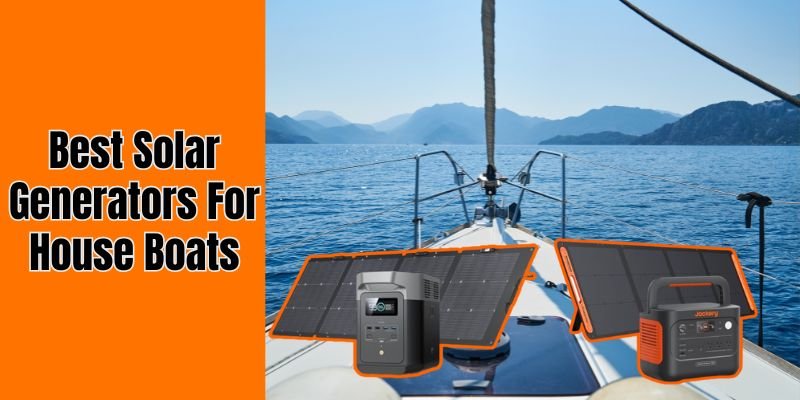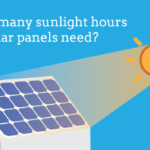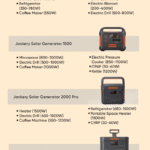Disclosure: This post contains affiliate links and I will be compensated if you make a purchase after clicking through my links. Learn More
Yes, solar panels work on cloudy days. They generate electricity even without direct sunlight.
Clouds might reduce efficiency, but they won’t stop solar panels completely. Solar energy is not just for sunny days. People often wonder about its effectiveness when the sky is overcast. The truth is, solar panels can still produce electricity under cloudy conditions.
While direct sunlight boosts their output, diffused light from clouds can still be harnessed. This means that even in less-than-perfect weather, solar technology remains a viable energy source. Understanding how solar panels function in various weather conditions helps in making informed decisions about their use. This knowledge is crucial for anyone considering solar power as a reliable and sustainable energy solution.
Credit: www.ossila.com
Solar Panel Basics
Solar panels are like the quiet workers on your roof, diligently converting sunlight into electricity. You might wonder, do they still perform their magic on cloudy days? The answer is yes, though the process is a bit more nuanced. Understanding how solar panels work can help you make informed decisions about harnessing solar energy, regardless of the weather.
How Solar Panels Generate Power
Solar panels generate power through a fascinating process. They contain photovoltaic cells that absorb sunlight and convert it into electricity. Even on cloudy days, these cells can capture some sunlight and produce energy. Think of it as a dimmer switch, where the output is slightly reduced, but still effective. You might notice that solar panels are often paired with batteries to store excess energy, ensuring you have power even when the skies are gray.
Types Of Solar Panels
Not all solar panels are created equal. There are several types, each with unique features that affect performance. Monocrystalline panels, for example, are known for their high efficiency and sleek design. They perform well even in lower light conditions.
Polycrystalline panels are a bit more affordable, but may not be as efficient on cloudy days. However, they are still a popular choice for many homeowners. Thin-film panels are another option. They are lightweight and flexible, making them great for unusual installations, but might require more space due to lower efficiency.
Have you ever considered which type would best suit your home and environment? Choosing the right one can maximize your energy savings, even when the sun isn’t shining brightly.
Sunlight And Energy Conversion
Solar panels can still generate electricity on cloudy days. They use daylight, not just direct sunlight. Even in less sunny weather, they capture scattered light, converting it into energy. While efficiency may decrease slightly, solar panels continue to produce power, ensuring a reliable energy source.
Sunlight and energy conversion are fundamental to understanding how solar panels work. Many people wonder if solar panels are effective on cloudy days. After all, sunlight is crucial for energy production. But how does this process really work? What happens when clouds obscure the sun?
Role Of Sunlight In Energy Production
Sunlight is a form of electromagnetic energy. When it hits solar panels, it excites electrons in the photovoltaic cells. This movement generates electricity.
Even on cloudy days, solar panels can still capture sunlight. The diffuse light that penetrates the clouds is enough to produce electricity. Did you know that Germany, known for its cloudy weather, is one of the world leaders in solar energy?
Effect Of Light Intensity
Light intensity directly impacts the amount of electricity generated by solar panels. On a bright sunny day, solar panels operate at maximum efficiency. But what happens when the sky is overcast?
On cloudy days, the light intensity is lower. This results in reduced energy output. However, solar panels are still capable of functioning at about 10-25% of their rated capacity. It’s like the difference between reading under a desk lamp and in direct sunlight.
Have you ever noticed how your mood changes on cloudy days? Similarly, solar panels feel the drop in light intensity. But they keep working, just like you might on a dreary Monday morning.
The key takeaway is that solar panels are more versatile than you might think. They aren’t just fair-weather friends. Are you ready to harness the power of the sun, rain or shine?
Cloudy Weather Impact
Solar panels are a great way to use renewable energy. They help save money and reduce carbon footprints. Many people wonder about their performance on cloudy days. Understanding the impact of cloudy weather is essential. It helps in determining solar panel efficiency.
Cloud Cover And Solar Efficiency
Cloud cover can affect solar panel efficiency. Panels rely on sunlight to generate energy. Clouds block some of this light. This reduces the energy output. But panels still work on cloudy days. They absorb scattered sunlight. This sunlight still produces energy. The amount depends on cloud thickness. Thicker clouds mean less sunlight.
Comparing Clear And Cloudy Days
Clear days provide optimal conditions. Panels receive full sunlight. Energy output is at its peak. Cloudy days are different. Panels receive less sunlight. Energy production decreases. But it doesn’t stop completely. Panels still generate electricity. They work at reduced capacity.
Different locations have different cloudy day impacts. Areas with frequent clouds see reduced efficiency. Sunny regions see less impact. Understanding these differences is key. It helps in planning solar panel installation. Proper planning maximizes energy production.
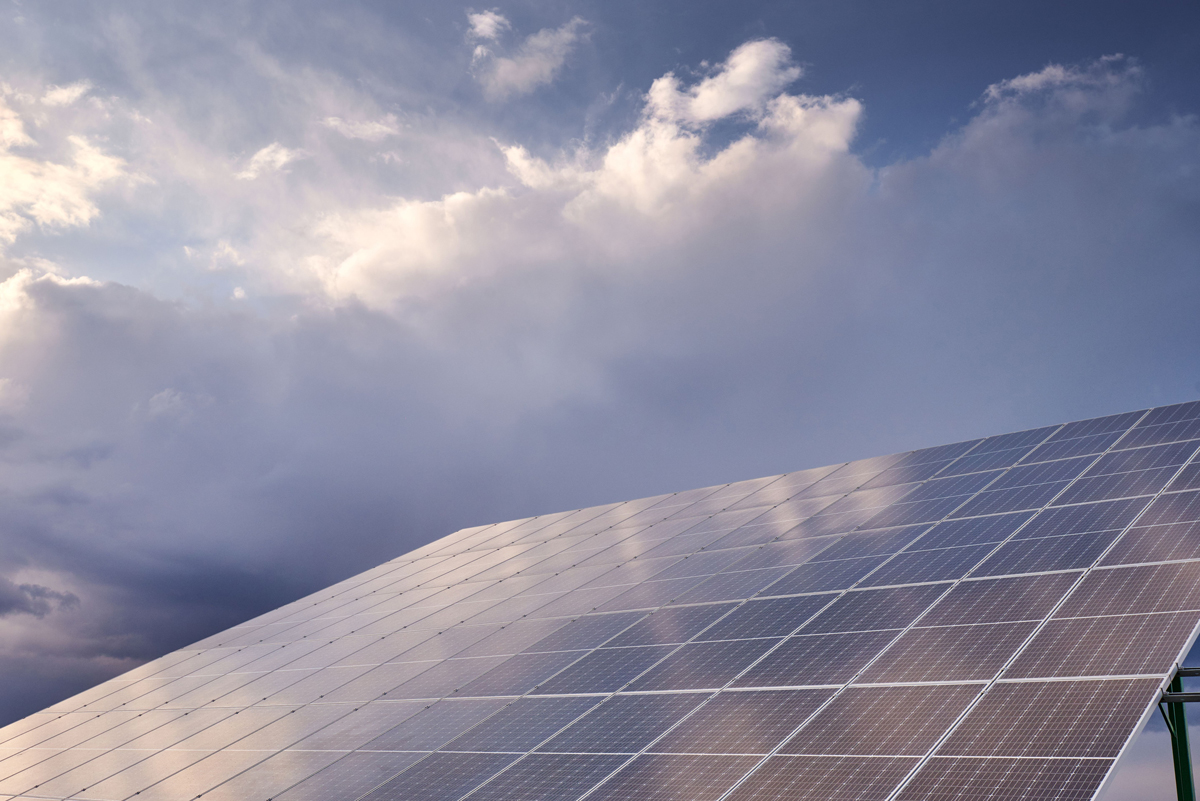
Credit: www.lgcypower.com
Technology Advancements
Solar energy has come a long way, and technology advancements are at the heart of this transformation. With innovations in solar panel design, the ability to harness solar energy on cloudy days has greatly improved. You might wonder how these panels can still generate power without direct sunlight. Let’s dive into some of the breakthroughs that make this possible.
Improvements In Low-light Performance
Recent advancements have significantly boosted the efficiency of solar panels under low-light conditions. Manufacturers have developed panels that can capture and convert diffused sunlight, which is abundant on cloudy days. These panels use advanced materials and coatings that enhance their ability to absorb light.
Consider this: if you’ve ever noticed how your smartphone’s camera performs better in dim lighting than older models, similar principles apply here. The technology in solar panels has evolved to make them more sensitive to different light wavelengths, ensuring they still produce energy when skies are overcast. This means you can rely on your solar panels even when the weather isn’t perfect.
Innovative Solar Panel Designs
The design of solar panels has undergone a remarkable transformation. Engineers are now creating panels that maximize exposure to available light, regardless of its intensity. Some panels incorporate bifacial designs, which can capture light from both sides, increasing their efficiency.
Imagine walking through a garden with plants that adjust their leaves to catch sunlight from every direction. Solar panels with similar adaptive designs are now available. Their unique structure allows them to absorb light more effectively, even when it’s scattered by clouds. As a result, your solar energy system can continue to power your home efficiently, offering you peace of mind.
These advancements not only promise better energy production but also challenge us to reconsider our assumptions about solar power. Have you ever thought about how solar energy could be harnessed more effectively in your area, even on cloudy days? With technology constantly evolving, the possibilities are endless, and the impact on sustainable energy is profound.
Geographical Factors
Solar panels’ efficiency varies across different geographical locations. The amount of sunlight, weather patterns, and altitude play crucial roles. Understanding these factors helps in assessing solar panel performance. Some regions receive abundant sunlight, enhancing solar power generation. Others face challenges due to frequent cloud cover.
Impact Of Location On Solar Efficiency
Location significantly influences solar panel efficiency. Areas closer to the equator typically receive more sunlight. These locations have higher solar power potential. In contrast, polar regions experience longer periods of darkness. Such areas may see reduced efficiency in certain seasons.
Altitude also impacts solar panel performance. Higher altitudes receive more intense sunlight. This can increase the energy produced by solar panels. Coastal areas might face issues with salt corrosion. Inland regions generally do not have this concern.
Regions With High Cloud Coverage
Regions with frequent cloud cover face challenges in solar power generation. Clouds block direct sunlight, reducing the panels’ efficiency. Despite this, solar panels still work on cloudy days. They convert diffused sunlight into electricity, though at a lower rate.
Places like Seattle and London experience many cloudy days. Yet, solar power remains a viable option. Advances in solar technology improve performance under cloudy conditions. Efficient panels now capture more diffused light.
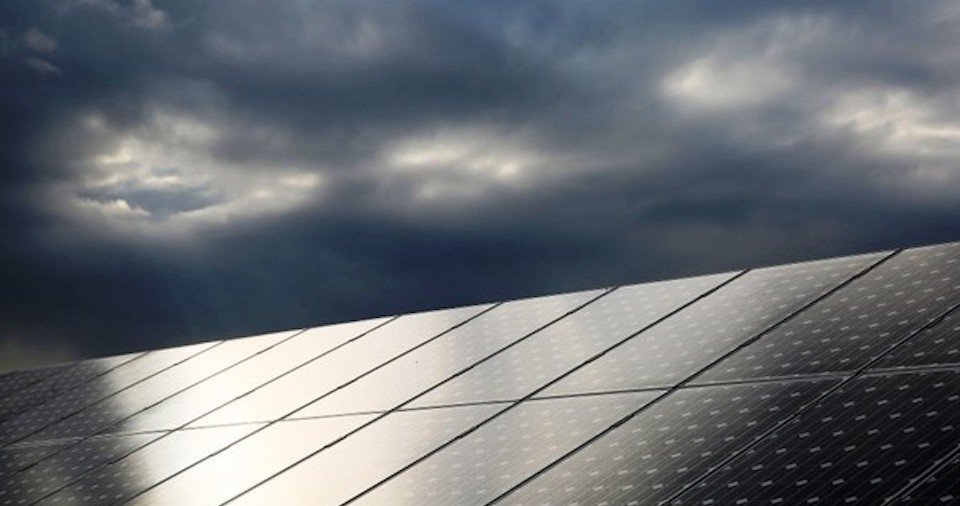
Credit: www.solaris-shop.com
Economic Considerations
When considering solar panels, many people wonder about their effectiveness on cloudy days. Economic considerations play a crucial role in deciding whether solar panels are a worthwhile investment. Understanding the financial implications during less sunny periods can help you make informed decisions about solar energy for your home.
Cost-benefit Analysis On Cloudy Days
On cloudy days, solar panels might produce less energy, but they don’t stop working entirely. While the output drops, panels can still generate up to 25% of their usual capacity. This means that even in less-than-ideal conditions, you’re still saving on energy costs.
Think about the energy costs you currently pay. Even a partial reduction can lead to significant savings over time. When you weigh the installation costs against potential savings, the balance can still tip in your favor.
Consider a simple example: If your panels save you $50 a month on average, even on cloudy days, that’s $600 a year back in your pocket. Over a decade, you could save $6,000, making the upfront investment more palatable.
Long-term Savings Potential
Over time, the savings from solar panels can compound, especially as energy prices rise. You may start small, but as you harness energy year after year, the financial benefits grow. The initial expense becomes less significant when you consider the long-term savings potential.
Think about your future self, relieved to have lower energy bills as costs climb. Investing in solar panels now can insulate you from future price hikes. This foresight can lead to a more stable financial future.
Have you ever wondered how much you’ll save in 20 years? With solar panels, your savings can be substantial, potentially covering other household expenses. The decision to invest in solar energy is not just about today; it’s about securing tomorrow.
Case Studies
Solar panels have become essential in sustainable energy solutions. But, do they work on cloudy days? Exploring real-life scenarios answers this question. Case studies offer insights into solar panels’ efficiency under overcast skies.
Real-world Examples Of Cloudy Conditions
In Germany, cloud cover is frequent, yet solar panels thrive. The country leads in solar energy production. This defies the myth that sun is essential. Solar panels capture diffuse sunlight, generating energy despite clouds.
Seattle, Washington, known for its cloudy weather, also uses solar power. Many homes rely on solar panels for energy. Despite frequent rain and overcast days, panels perform well. This proves cloudy conditions aren’t a barrier.
Success Stories In Overcast Regions
In the United Kingdom, solar energy has gained popularity. A notable example is the city of Manchester. Despite frequent rain, solar panels power homes and businesses. Residents report significant energy savings.
Portland, Oregon, offers another success story. It’s famous for its cloudy weather. Yet, many residents use solar panels effectively. Portland’s community has embraced solar energy, showing its viability in gray climates.
These cases demonstrate solar panels’ effectiveness in diverse weather. Cloudy days don’t stop energy production. Solar technology adapts to varying light conditions. This makes it a reliable energy source worldwide.
Future Of Solar Energy
Cloudy days still allow solar panels to produce energy. They generate electricity from indirect sunlight. Solar technology advances, ensuring efficiency even without bright sun.
The future of solar energy is brighter than ever, even on cloudy days. With advancements in technology, solar panels are becoming more efficient and adaptable to different weather conditions. As the world leans towards sustainable energy, understanding how solar panels work in less-than-ideal conditions becomes crucial. You might wonder, will solar panels still be effective if you live in a cloudy area? The answer is more promising than you might think.
Emerging Technologies
Innovations in solar technology are paving the way for increased efficiency and effectiveness. New materials, like perovskite solar cells, promise higher energy output even in low-light conditions. These cells can be layered on top of existing panels, boosting their performance.
Additionally, bifacial panels can capture sunlight from both sides, making them more efficient on cloudy days. Imagine having panels that can absorb ambient light reflected from the ground. This means even on overcast days, you’re still generating a significant amount of energy.
Energy storage solutions are also improving. Advanced batteries allow you to store excess energy generated on sunny days for use when it’s cloudy. This means you can rely less on the grid and more on your own solar power, maximizing your energy independence.
Potential For Growth In Cloudy Areas
Cloudy regions are no longer a barrier to solar energy adoption. Countries known for their overcast weather, like Germany, are leading solar energy production. They demonstrate that solar power is not just for sunny states like California or Arizona.
If you live in a cloudy area, investing in solar can still be worthwhile. The key is to choose the right technology and optimize your system. Local incentives and rebates can further reduce installation costs, making solar an attractive option for homeowners.
Consider the long-term benefits: reduced electricity bills, increased property value, and a smaller carbon footprint. Are you ready to embrace solar and contribute to a sustainable future, regardless of the weather? The potential is there, waiting for you to harness it.
Solar technology continues to evolve, and its adaptability means that even on cloudy days, there’s a sunny outcome. With emerging technologies and a growing market in cloudy areas, the future of solar energy is indeed promising. Are you prepared to be part of this bright future?
Frequently Asked Questions
How Effective Are Solar Panels On Cloudy Days?
Solar panels can still generate electricity on cloudy days, but their efficiency decreases. They typically produce 10-25% of their potential output compared to sunny days. Advanced solar technology can optimize energy collection during overcast conditions, ensuring consistent power production. Proper installation and positioning enhance their effectiveness even in less sunny climates.
Do Solar Panels Work With Moonlight?
Solar panels can’t effectively generate electricity from moonlight due to its low intensity compared to sunlight. Moonlight offers minimal energy, insufficient for solar panel operation. Solar technology relies on direct sunlight for optimal performance, converting it into usable electricity efficiently.
Moonlight lacks the necessary brightness to power solar panels.
Read More: Does Solar Panel Need Direct Sunlight?
How Much Will A 200 Watt Solar Panel Output On A Cloudy Day?
A 200-watt solar panel typically produces 10-25% of its capacity on a cloudy day. This equals 20-50 watts output. Performance varies based on cloud density and location. Consider energy storage solutions for consistent power supply during cloudy weather.
Do Solar Panels Work If It’s Not Sunny?
Solar panels work even when it’s cloudy. They generate electricity from daylight, not just direct sunlight. Efficiency decreases in poor weather, but they still produce energy. Modern panels are designed to maximize output in various conditions, ensuring consistent performance.
Final Words
Solar panels do work on cloudy days. They generate electricity from sunlight. Even with clouds, panels absorb diffuse sunlight. This keeps your energy production steady. The efficiency might drop slightly. But panels remain useful and reliable. Investing in solar energy still makes sense.
It’s a sustainable choice. It reduces carbon footprint and saves money. Panels continue to power homes, rain or shine. Weather changes won’t stop solar energy benefits. Embrace clean energy. Solar panels are a smart decision. They work well in various conditions.
Consider solar power for a greener future.

